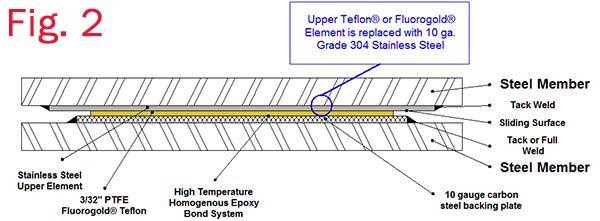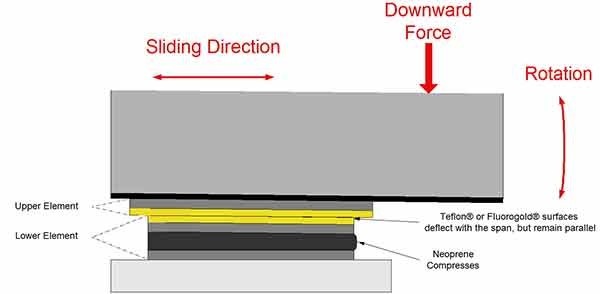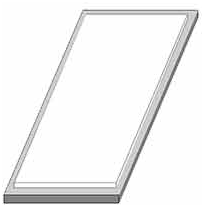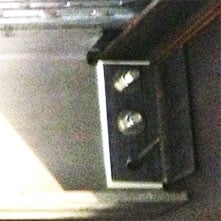Slide Bearing design and specifications fall into categories with the most common being FC-1010-CS, a 3/32” layer of Fluorogold® bonded to 1/8” thick carbon steel. An upper and lower member of FC-1010-CS are used to create the slide bearing, as shown in Fig. 1. This is the most common configuration and can function effectively in the following ranges:
Steel Manufacturing Blog: Keeping it Steel
Slide Bearing Designs and Specifications: How to Overcome Higher Temperatures and Higher Pressures
Tags: Slide Bearing, Slide Bearings, Teflon Slide Bearing, Fluorogold Slide Bearing
In many of the requests we receive for Fluorogold® or Teflon® Slide Bearing Assemblies the fabricator is under the impression the specific dimensions they require will cut to size, then bonded together and finished. This can be done, but only starts to make economic sense when the requirements call for a large quantity of the same dimensions.
In the field of Steel Fabrication Teflon®, PTFE and Fluorogold® are most often bonded to steel backing plates to form Slide Bearings. This type of assembly works very well when the anticipated movement will only be horizontal, such as expansion or contraction. Occasionally the application requires the bearing to also allow for some movement or cushioning vertically. In cases like these, the bearing design can have a standard thickness, sliding surface bonded to a commercial rubber cushion.
Tags: Slide Bearing
An often overlooked issue with Slide Bearings is the system of welds. Before beginning the process the steel fabricator should understand what effect the weld will have on the Slide Bearing.
Tags: Slide Bearing
Understanding the Differences Between PTFE or Teflon® Slide Bearings
Slide bearings are a very important aspect of the construction process, but the jargon involved can often be very confusing. There are some basic terms that need to be understood when discussing the methods of constructing a Slide Bearing or Teflon® Bearing Pad. The many different terms associated with slide bearing surface are listed below, while next week’s article will cover backing plate options.











